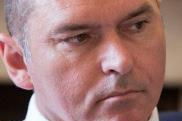The new Conservative government under Boris Johnson will put the NHS under greater scrutiny, as they provide more cash, says its former adviser Richard Sloggett.
Having travelled the length and breadth of the United Kingdom, been up at all hours, drunk copious amounts of coffee and been one of the elections best/worst twitter attractions (depending on your point of view) you may think Matt Hancock would be planning a little time off.
But following the election result on Friday, the secretary of state was straight back into the Department of Health and Social Care with a clear message. ”There is a lot riding on this Department and we have a lot of work to do,” he said to officials hastily assembled.
Top departmental officials have been waiting for this. In Hancock returning to post (albeit with a wider reshuffle creating some uncertainty post February), they know what to expect – continuity, energy and high expectations for what can be accomplished. They also know that the challenges are vast, structural and deep seated.
A hard centre
Hancock’s second term as health and social care secretary officially commenced on the 24th July, following his re-appointment in the first Johnson reshuffle. The pace shifted markedly. A new number 10 team were clear that the NHS was to be at the epicenter of their agenda. Health weeks were devised, policy commissions flew around Whitehall and new funding squeezed from the Treasury.
The election saw no let-up in focus and having neutralised the NHS through a ”high press” strategy to break through the “red wall” of Labour seats; number 10 is now clear that the NHS needs to deliver. Expect far greater clarity and direction from Downing Street and a re-energised Department on the delivery of health manifesto commitments and the accountability of long-term plan money.
An Accountability and Delivery Bill
This more hands on style will be seen initially through the publication of an NHS Bill. Embedding the long-term plan cash within legislation will be a primarily symbolic exercise, but good politics. New backbench Conservative MPs will stand up in the chamber and be able to promote and argue for what the plan (and other funding) will mean for their area. Labour, divided after an election, will struggle to develop a coherent response.
The NHS keen to see elements of the Lansley Act reversed will get it’s wish in the detail of the Bill, but with strings attached. The development of metrics for the plan presents a first test for this new world order. What will the NHS be asked to report on? How frequently and who will it be answerable to?
The issue of changes to waiting time targets also looms large. A path through exists to make revisions on clinical advice, but the public perception and threat looms of a downgrade that is being undertaken by a system no longer able to deliver on constitutional commitments. This will require expert system and political handling to manage.
A tray beyond the in-tray
The department Hancock returns to faces some major challenges. Winter performance is at its worst level ever, staff shortages are acute, social care remains unfixed. Commitments from his first stint at the department need to be seen through, but under new political masters – the technology agenda led by NHSX, a coherent response to the prevention green paper and a People Plan that delivers a clear sense of direction on the top issue facing the service.
Many of the areas that the secretary of state needs to deliver on will require a new political commitment and critically cash from government beyond the walls of the NHS. Indeed, if the government wants to positively deliver for the NHS and those who use it in the next five years, it needs to see the NHS as not a single branded and funded service, but part of a wider health and social care ecosystem that inter-connects closely.
The secretary of state has always been of this view. Clear that the NHS funding settlement was crucial to getting the performance moving in the right direction but insufficient unless underlying issues driving it were also not tackled (this was clearly reflected in his first term priorities of workforce, technology and prevention).
Expect him to continue to bang these drums – alongside capital funding where his 125 election constituency visits have been eye opening – harder and faster second time around. For NHS leaders, under more scrutiny, the hope will be that Number 10 hears this tune and supports in discussions with the Treasury. The spring budget next year and looming Spending Review after could well determine if taking back control of the NHS is going to work or not.
































7 Readers' comments